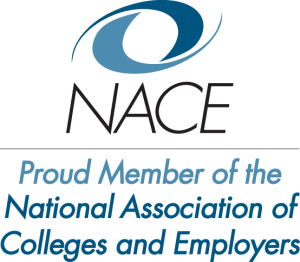What Works in a Job Search? Part 1: Effective Job Search Strategies
The number of “how to” resources on conducting a job search seems limitless, as anyone visiting the careers section of a bookstore, or googling “job search tips,” can tell you. How do you know what actually works? From a scientific perspective, a straightforward way to answer this question is to design a job search intervention containing activities thought to work, and then to experimentally test it against a control or comparison group. If the job search intervention group has better outcomes than the control group, we can conclude the intervention is effective.
Fortunately, a large number of experiments testing job search interventions have accumulated over the years. That enables researchers to conduct meta-analyses that examine the overall effects across all those studies. In one of these, Sonqui Liu, Jason Huang, and Mo Wang analyzed 47 studies with 9,575 participants. They were interested in answering two questions. First, do job search interventions actually help people find jobs? And second, what do the most effective interventions ask people to do?
The answer to the first question was a clear yes: Job-seekers are more likely to find employment after participating in a job search intervention—around three times more likely. In exploring the second question, Liu, Huang, and Wang1 found that interventions are most effective if they operate on two levels, first helping people improve their job search skills, and second, mobilizing their motivation to do the hard work a job search requires.
In this blog—part 1 of a four-part series—I describe what it looks like, exactly, to improve your job search skills by learning effective job search strategies.
Learn some of the most valuable #JobSearch strategies in Part 1 of @Pathway_U’s 4 part series here:Click to TweetEffective Job Search Strategies
If you haven’t had to carry out a formal job search before, or if it has been a long time since your last one, you may not know where to begin. The default for many job-seekers is extremely passive: They put together a resume, search an online job board for opportunities, and then apply and wait. Some people find success this way, especially those seeking jobs in highly specialized areas with a labor shortage.
Yet many people fail with this approach. Why? Part of the problem is most job openings are never publicized and are filled via informal social networks rather than job boards. Another issue is that the vast majority of job-seekers take that same passive, apply-online-and-wait approach. That means that if you rely exclusively on this approach, you’re competing against the largest proportion of job-seekers for the smallest proportion of available jobs. Success is possible, but the odds are not in your favor. A better strategy is needed.
Use, but go beyond, job boards.
Most effective job search strategies require a much more active approach, and one that is multipronged. Now, let me be clear: It is perfectly fine to apply online to publicly posted positions. Doing so certainly won’t hurt you, and it is usually easy to do.
Get the #JobSearchStrategies you need to boost your job search experience and land the job you’ve been looking for in Part 1 of @Pathway_U’s 4 part series:Click to TweetIn fact, PathwayU offers a job search tool where you can enter a job title, and then any U.S. zip code, and publicly posted jobs will be presented for your perusal. The system even evaluates each job posting based on how well it is predicted to fit your interests and values, alerting you to jobs that are a Very Strong vs. Strong vs. Fair match, and so on.
Browsing these will give you a good sense of the kinds of positions that are out there, and most postings allow you to apply directly from the site. Do not avoid online job boards in your strategy. But do avoid using only online job boards.
To understand why going beyond job boards is important, think about the hiring strategy that most employers use. Most hiring managers want to minimize risk by hiring a known quantity. Ideally (for them), that means hiring someone they personally know, which is why lots of positions are filled by promoting someone from within. (This is also one of the reasons that internships have value, by the way—they often put the intern first in line for open positions).
If they can’t hire from within, hiring managers typically prefer candidates who can show evidence of excellent work related to the skills required by the open position. Supplementing a resume with an online portfolio that includes work samples is helpful in this regard. If employers can’t find that, they prefer to hire someone a trusted colleague can vouch for. This highlights the value of networking—identifying people who may have connections to decision-makers at your target organization and sharing your interest in the position with them.
If none of these methods work, some employers turn to recruiters to give them pre-screened leads. Finally, if a hiring manager is still coming up empty, she will sift through the enormous pile of resumes that accumulated in response to a publicly posted job ad.
Get personal, and follow up with a phone call.
One recommended job search strategy capitalizes on the idea that the more effort people use to connect with a hiring authority they can name, regarding a position about which they have done their homework, at an organization they have come to know well, the more likely landing that job becomes.
Paul Strickland, a master career counselor, has long urged job-seekers to count the number of “active approaches” they make in a given week, where “active approach” is defined as a cover letter and resume, submitted directly to an individual in a hiring capacity, followed up with a phone call. Most job-seekers take the passive approach, starting a cover letter with “To Whom It May Concern” and ending with something like “I look forward to possibly hearing from you,” thereby practically inviting a rejection.
Simply making the effort to identify the hiring authority (so you can address the letter to that person specifically) and ending with “I will follow up with a phone call in a couple of weeks, and look forward to talking with you” can make all the difference in directing more of that person’s attention to your application materials than to other job-seekers against whom you are competing. Obviously, it requires effort to pursue this strategy, but that effort translates into a far greater chance of success.
Conduct informational interviews.
Finally, to access the hidden job market (those jobs that are filled without ever being publicly posted), a broader networking strategy is invaluable. One option is to conduct informational interviews to connect with people on career paths that seemed appealing to you. While interviewing someone for informational purposes, always make a point of sharing what kind of work seems most engaging to you, and why. Work the process, trust it, and eventually, someone you interview may begin sharing info about job opportunities with you, and even advocating on your behalf.
Learn the rules of the game, and play within them well.
Beyond moving to the active end of the passive-active continuum in your job search, it also helps to realize that different types of occupations, industries, and individual companies often have their own unique (and typically unwritten) rules for how hiring occurs.
Adapting your strategy to play by those rules, where relevant, is essential. Some industries require one-page resumes, but one-pagers look thin in other industries; a full multi-page curriculum vitae instead of a resume is expected in others.
In some sectors, like some types of government work, internal hires are discouraged; positions are required to be publicly posted and every applicant’s materials must be reviewed by multiple raters on a search committee. In other sectors, especially at small, family-owned businesses, a far less formal process is used; often word-of-mouth is the only way anyone finds out about a new opportunity.
Learning about these different “rules” highlights the importance of leaning on your networks, and proactively expanding those networks if needed, so you can test your assumptions and get the inside scoop. Doing this is essential because no matter what you bring to the table as a job applicant, if you don’t play by the relevant rules, you are unlikely to even be given a look.
In part 2 of this series, I will share insights on enhancing your self-presentation—that is, how to effectively convey (on paper and in an interview) what you bring to the table for a new employer. Stay tuned! For now, if you’d like more details on job search strategy, such as tips for effective networking, are available at the PathwayU Tools section.
This blogpost series is excerpted from Bryan’s latest book, Redeeming Work. Dik, B. J. (2020). Redeeming Work. West Conshohocken PA: Templeton Press.
1Liu, S., Huang, J. L., & Wang, M. (2014). Effectiveness of job search interventions: a meta-analytic review. Psychological bulletin, 140(4), 1009.
-1.png?width=288&height=67&name=PathwayU_PGLogo%20(1)-1.png)











